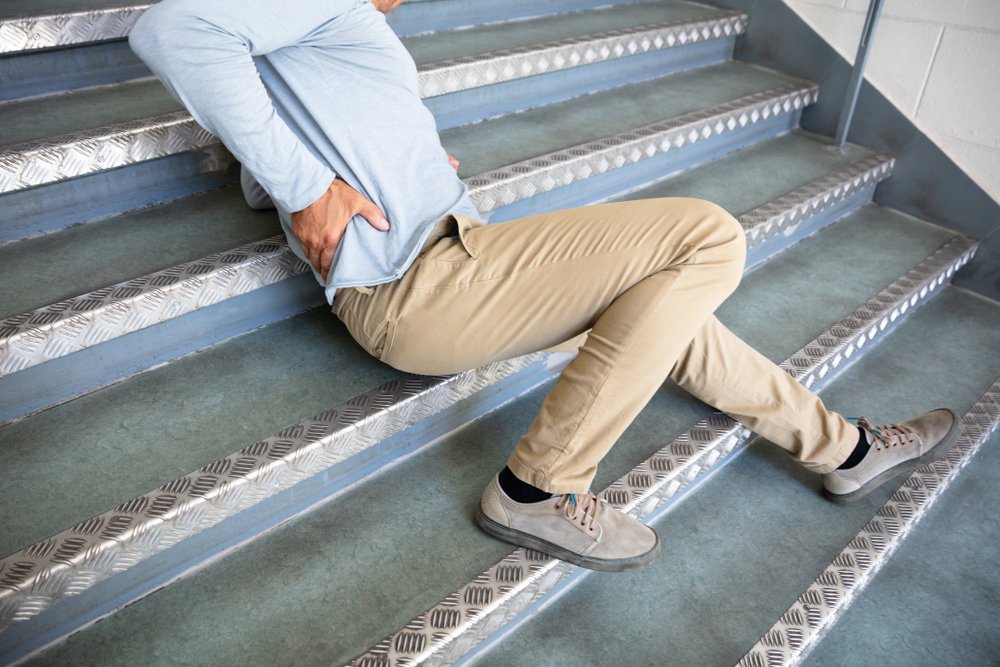 No matter what kind of job you have, workplace accidents can happen. In fact, according to the CDC, around 2.4 million workers sustained work-related injuries(opens in a new tab) that required treatment in emergency rooms during 2019. Because of the severity and frequency of these events, it’s important for workers to know the most common kinds of workplace injuries and what they and their workplaces can do to minimize the risk of injury.
No matter what kind of job you have, workplace accidents can happen. In fact, according to the CDC, around 2.4 million workers sustained work-related injuries(opens in a new tab) that required treatment in emergency rooms during 2019. Because of the severity and frequency of these events, it’s important for workers to know the most common kinds of workplace injuries and what they and their workplaces can do to minimize the risk of injury.
Overexertion
Overexertion is one of the most common work-related injuries, and it’s not hard to see why. Overexertion injuries can be caused by lifting, holding, pushing, pulling, or carrying objects as part of your job. These injuries can occur after just one single event, or after performing these actions repeatedly over time. Either way, overexertion can lead to lasting physical harm, especially on the lower back.
One way to prevent injuries from overexertion is to learn basic best practices for lifting. You’ve likely heard to “lift with your legs” before; by squatting and keeping your back straight, using your leg muscles to do the bulk of the lifting, you can avoid injuring your back muscles. Other best practices include stabilizing your body by standing with your feet shoulder-width apart, avoiding twisting or bending your back while lifting, and utilizing equipment or help from other team members when necessary.
Slips and Falls
Wet floors, messy surroundings, and poor lighting are also common causes of workplace accidents. Slips and falls can cause serious injuries, both visible and invisible. Visible injuries can include bruises, bleeding wounds, broken bones, or loss of consciousness. Slips and falls can also cause less visible but still highly noticeable injuries, like sprained or torn ligaments, and sprained muscles, tendons, and joints. An invisible injury, on the other hand, could be something as serious as a traumatic brain injury.
Slips and falls are typically caused due to a loss of traction or inadvertently tripping over an object. Because of this, keeping both interior and exterior floors clean and clear is a huge help in avoiding these incidents. This means clearing snow and ice from outdoor areas, cleaning spills in indoor areas, and preventing cords, cables, boxes, or other items from sitting in walkways, among other things. Ensuring proper lighting so people can see where they’re going and using anti-slip shoes and mats are helpful measures, as well.
Injuries From Equipment
Injuries from equipment could refer to injuries from incidents like being hit by a falling box in a warehouse or stockroom, or injuries sustained from operating heavy machinery. Being hit by a heavy falling box is painful enough and could cause multiple kinds of injuries, but if a job includes operating machinery, injuries like crushed fingers, amputations, lacerations, and burns may occur.
When working with machinery, it’s important to follow your training and be very careful. Each machine is different, and machines used in workplaces range from large industrial manufacturing machines to coffee brewers at your local coffee shop. If operating a machine requires you to wear personal protective equipment like safety goggles, hard harts, gloves, or closed-toed shoes, make sure to do so. Also, keep track of how often each machine needs to be serviced and follow that schedule.
Repetitive Motion
Injuries from repetitive motions, also known as repetitive stress injuries, are another one of the most common workplace injuries. These injuries occur when the same motions, often not considered dangerous in and of themselves, are performed over and over, for hours at a time, for days and weeks on end. These injuries can affect all parts of the body. Typically, these injuries build over time, but ultimately, they can be debilitating. Because of the nature of these injuries, many different kinds of employees are at risk, from those in an office to those on an assembly line.
To reduce your risk of repetitive stress injuries, process improvements and better equipment may be necessary. An example of a process improvement might be changing a standing job to a seated job, when possible, to alleviate back pain from repeatedly bending over. Ergonomic equipment may also be helpful. Ergonomic tools are specifically designed to allow someone to do repetitive motions without injury, like ergonomic mice and keyboards that allow desk workers to click and type all day without risking carpal tunnel syndrome.
Workplace injury prevention practices are great, but if you’ve already been hurt, or you’re looking for resources in case you become hurt in the future, know that physical therapy can help. Musculoskeletal injuries, or injuries that affect the bones, tendons, ligaments, and muscles, are some of the most common injuries sustained in the workplace, and physical therapists are equipped to non-invasively help treat these injuries.
If you’ve been injured at work and are looking for an injury clinic near you, Performance Unlimited’s physical therapists, located in Wexford, PA, are here to help. Schedule an appointment online today!
